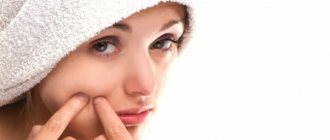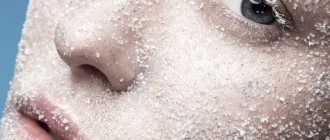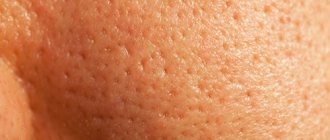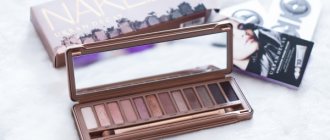White spots under the eyes, and sometimes on the upper eyelids and other areas of the face, are called milia. Their popular name is millet, due to their external resemblance to millet grains. To the touch, these are dense small formations, small bumps, not painful, but causing aesthetic discomfort. Why do they occur and how can they be removed?
The distribution area of milia is the area under the lower eyelid, but they can also appear around the nose, on the upper eyelids, under the lower lip. They do not change in size, but they do not go away naturally, even if you try to squeeze them out. White spots under the eyes, similar to pimples, are small subcutaneous formations of white or yellowish color, filled with layered keratin accumulations (keratinized epithelial cells). Their size varies from 0.5 to 2-3 mm, and the points are located in small groups or in the form of separate elements, but never merge with each other. Of course, you want to get rid of them as quickly as possible, but you need to do this not on your own, but by turning to the services of specialists. Let's talk about the reasons for the formation of milia and methods of removal.
What are closed comedones?
Closed comedones are non-inflamed cysts that arise as a result of the accumulation of sebaceous gland secretions at the mouths of the sebaceous gland duct. Normally, skin secretions freely come to the surface of the skin without getting stuck in the ducts.
Closed comedones are not amenable to simple mechanical extrusion, because... have no free exit. In essence, it is a sebaceous plug that has no exit through the natural sebaceous duct.
They are located in seborrheic areas, most often in the forehead and cheeks.
Read about the causes of increased oily skin and how to reduce sebum production here.
How are closed comedones formed?
The mechanism of formation of white comedones involves 2 disorders:
- Follicular hyperkeratosis is a violation of the exfoliation of keratinized cells that linger and narrow the excretory ducts. Normally, dead skin cells are exfoliated both from the surface of the skin and from inside the pores. If the excretory duct of the sebaceous gland (pore) is narrow, then the exit of the contents becomes impossible and a blockage forms.
- Changes in the composition of sebum also contribute to the formation of blockages. With a denser and thicker secretion of the sebaceous glands, glued together by scales, its exit to the outside is difficult.
Diagnosis of atheroma on the face
Atheroma looks like a small subcutaneous ball. The tumor itself does not resolve and gradually increases. With long-term existence, atheroma on the face can reach 7 cm in diameter. On its surface you can always see a black dot that blocks the sebaceous duct. Atheroma has clear boundaries and a spherical shape. The patient does not feel pain upon palpation. Visually, atheroma is similar to lipoma, hygroma, fibroma, hemangioma, so a doctor must make an accurate diagnosis. If there are difficulties in diagnosis, an MRI may be prescribed to determine the nature of the tumor. After removal of any formation, including atheroma, a histological examination is carried out.
Rice. 2 Atheroma looks like a small ball under the skin of the face
Causes of white comedones
Why does hyperkeratosis form and changes in the amount and composition of sebum:
- According to medical research, the most common cause is hormonal imbalance .
Other reasons:
- Genetic predisposition
- Improper facial hygiene and cosmetics used
- Side effect of drugs
- Diet disorders and gastrointestinal diseases
It is rarely possible to establish the true cause. If possible, you need to pay attention to the list above and try to eliminate the root cause.
However, white comedones will not disappear on their own; external influence is necessary to get rid of them.
Is it possible to remove white spots on the skin around the eyes on your own?
Doctors give a categorical answer “no” to this question. Under no circumstances should you try to get rid of small spots under the eyes at home. Such attempts will still not lead to the desired result. Firstly, it is almost impossible to squeeze out milia, even with strong pressure, and secondly, severe redness then forms in this place, which can also be quite painful. The appearance will only get worse. If you try to squeeze out milia on your own, you can introduce an infection under the skin, and scars may remain in this place or a large acne may appear. The skin around the eyes is very thin and delicate, and takes quite a long time to heal when damaged.
The peculiarity of small white dots under the eyes is that they may not go away for quite a long time, sometimes for several years. When milia are small in size they are not noticeable, but sometimes their diameter reaches a millimeter or more. Of course, this looks unaesthetic, and I want to get rid of this problem as soon as possible, especially for women.
To solve the problem, you need to contact a dermatologist who will study your skin type and decide how to remove white spots under the eyes.
Why do you need special care for skin with closed comedones?
According to the international classification of acne, the formation of comedones is the zero or initial stage of acne development.
Impaired evacuation of sebum leads to the development of a retention cyst in the gland itself, which can subsequently lead to inflammation when acne bacteria are activated.
If cleaning is performed incorrectly, for example, with excessive force, the integrity of the sebaceous gland is disrupted, leading to aseptic inflammation.
Summary: treatment for closed comedones is necessary to prevent the development of more severe forms of acne.
What treatment is necessary and in what cases?
If the red dots are the result of insect bites, symptomatic treatment is required in exceptional cases when a person develops severe allergic reactions.
Also, therapy is not needed if such a symptom is
a consequence of nervous overstrain - it is enough to normalize your work and sleep schedule , and over time the skin condition will normalize.
In cases of pathological petechiae, treatment will be determined by the origin of the red dots.
In extremely rare cases (for example, with seborrheic dermatitis and abscesses ), surgery may be required to remove necrotic tissue and blood vessels.
But more often the cause of petechiae is an allergy, in which case treatment with antihistamines is required .
Stay up to date! As external remedies for allergies, you can use ointments and drops of Allergodil, Fenistil, Celestoderm, Actovegin, Actiderm, Forocort.
to supplement such therapy . If you have problems with blood vessels, it is better to choose multivitamin complexes containing calcium, zinc and vitamins E and A.
have a complex effect :
- Advantan . Anti-inflammatory ointment that helps with allergies and eliminates irritation, itching and burning. The drug contains no potent components. And despite the fact that this is a glucocorticosteroid drug, which has serious contraindications, in the absence of them, in most cases the cream is well tolerated by patients.
- Radevit . A symptomatic remedy that soothes itching, also has a moisturizing effect and helps to activate regenerative processes in facial skin cells. It is possible to use Radevit for mild manifestations of allergies.
- Momat. Another glucocorticosteroid cream that relieves inflammation and can be used to treat seborrheic dermatitis and any dermatoses in the initial stages.
- Gistan . An antiallergic drug that is sold in the form of an ointment for external use and in capsules for oral administration.
- Lokoid. Ointment for the treatment of many skin lesions of non-infectious origin. Among other things, it can be used to speed up the elimination of red dots).
- Traumeel. For burst blood vessels around the eyes, the drug is prescribed to be used in the form of an ointment. The product penetrates through the skin into the walls of blood vessels, restoring and strengthening them.
How to care for skin with closed comedones
Skin care for comedones necessarily includes professional removal and accompanying home care.
The correction scheme includes 3 stages that allow you to eliminate the problem forever.
Mechanical skin cleaning
A widely known and not always popular procedure. In the case of white comedones, it is irreplaceable.
- Resorption or dissolution of closed comedones with external means is impossible. Only mechanical intervention can remove existing blockages.
- The disadvantage of this method is that the effect is temporary. New elements will appear later, because... the skin functions as before.
What should you do: constantly extract closed comedones using a needle?
No, the procedure is carried out at least once a month until the white comedones completely disappear, which is only possible with concomitant external therapy aimed at normalizing sebum production and exfoliating dead cells.
Daily skin care
The drugs of choice for closed comedones are retinoids.
Retinoids are a well-studied group of substances derived from vitamin A, used in dermatology to treat problem skin with acne, and in cosmetology to correct age-related changes and hyperpigmentation. ⠀
How retinoids work:
- They penetrate the hair follicle and exfoliate the sebaceous gland duct. Naturally influence the processes of keratinization and exfoliation of skin cells - eliminate hyperkeratosis. Thus, the outflow of the pore contents is ensured.
- They reduce the activity of sebocytes, reducing the production of sebum and reduce the density of sebum, facilitating its secretion.
- They relieve the inflammatory reaction around the gland (remove the pink halo around closed comedones), preventing further development of the process into inflamed acne.
In accordance with the Federal Clinical Guidelines for the Management of Patients with Acne, 2015, retinoids are the first-line drugs for acne correction, including the initial stages.
Benefits of Retinoids
Why else are retinoids attractive in terms of choice for eliminating white comedones:
- physiological – they are a substance familiar to the skin, because the body itself supplies vitamin A to the skin in low concentrations;
- do not have a toxic effect;
- penetrate well into the skin, reaching the necessary layers;
FAQ (frequently asked question) Can retinol be recommended in the summer?
Previously, there was an opinion that retinol should not be used in the summer. It has now been proven that retinol does not increase skin photosensitivity!
Yes, retinol thins the stratum corneum, eliminating stratum corneum, but at the same time, by stimulating cell division, it thickens the epidermis as a whole.
Summary: The sun is not a contraindication for the use of retinol.
It is recommended to use preparations containing 0.3 - 0.5% retinol, or more gentle forms. This allows you to use retinoids regularly, every evening, without getting confused in complex application regimens. And without provoking skin irritation and peeling.
Example:
Renewing cream with Retinaldehyde DermaQuest is a godsend for daily saturation of the skin with retinoids without unwanted consequences.
Benefits of the cream:
Contains a new form of retinol – retinaldehyde at a concentration of 0.05%;
The composition is enhanced with a Vitamin A simulator - Bakuchiol - increasing the effectiveness of retinaldehyde;
Contains antioxidants and moisturizing complexes - powerful prevention of inflammation and irritation of the skin, preservation of its barriers;
The difference between retinaldehyde and retinol:
- 10 times more active than retinol!
- does not cause retinoic dermatitis
- used daily
- stable to oxidation
- comfort and safety of use for sensitive skin
Application:
Apply the cream daily in the evening to clean skin.
Another type of product that is mandatory for use for closed comedones is Sunscreen with SPF based on mineral photo filters. (link to an article on the selection and use of sunscreen for oily and problem skin here .)
The sun's rays activate the sebaceous glands, which increases the number of blockages. The choice should be made in favor of physical photo filters - a mineral screen.
Chemical photo filters are contraindicated. Their operating principle is based on converting the energy of UV rays into heat, which additionally activates the work of the sebaceous glands.
Example:
Mineral cream SPF 30 with zinc DermaQuest based on micronized zinc oxide 18.6% is a universal sunscreen for all family members!
- Does not penetrate deep into the skin and does not cause blockages
- Safe and hypoallergenic
- Blocks up to 97% of sun rays
- In 2022, the composition is enriched with BlueLight filters against blue light
The advantages of modern creams with SPF are not only photoprotection, but complete care products that do not require the application of additional creams in the morning.
How to get rid of white spots under the eyes?
To get rid of unpleasant rashes, several methods are used, but their essence is the same: opening the milia and removing its contents. The choice depends on the number and location of whiteheads, as well as their size and skin type. The effectiveness of all methods is the same, the difference lies in the cost and duration of the procedures.
- Mechanical removal. A dermatologist or cosmetologist, using a thin long needle or curette (a surgical spoon for scraping out soft tissue, removing suppuration, etc.), opens the milia and removes its contents. Before the procedure and after it, antiseptic skin treatment is carried out. At the site of each removed formation, small wounds remain, which soon heal. This method has its pros and cons. Of course, the advantage is the low cost of the procedure, but at the same time, mechanical removal is not suitable for people with thin or overly sensitive skin. Another disadvantage of this method is that in one procedure it is possible to remove only 10-15 milia, after which a break of several days is taken. Treatment can take quite a long time. Also, the mechanical method is not suitable if the white dots are located on the eyelids very close to the roots of the eyelashes. The skin in this area is extremely delicate, and exposure to it with a needle is undesirable, and noticeable redness will remain. Currently, this method is used only for medical reasons when other types of procedures are not suitable.
- Electrical coagulation is the destruction of milia by cauterizing them with high-frequency electric current. This procedure has much greater advantages compared to the first method. Using electrocoagulation, you can get rid of fairly deep formations, which is difficult to do with a needle or curette. But this method has its own characteristics: after cauterization, a dense crust forms at the site of the milium, which must be treated for 10 days until it falls off. Also, shallow scars may remain at the spots - small, but still noticeable.
- Laser coagulation is the most modern and safe method of getting rid of milia. It is suitable for large clusters of points, as well as when they are located too close to the organs of vision. To carry out the procedure, a CO-2 (carbon dioxide) laser is used, which has been successfully used in aesthetic cosmetology for almost three decades. It eliminates pathological formations layer by layer through thermal action. After its use, there is a lack of redness and suppuration, which can be observed in the case of a mechanical procedure, since the laser beam also has a bactericidal effect. In one or two procedures you can completely get rid of milia. Laser coagulation has the highest cost among the described types of treatment.
Chalazion
This is a chronic disease involving inflammation of the edge of the eyelid. The reason for the formation of a pimple of this type on the eyelid may be a blockage of the meibomian gland, which makes it difficult for the secretion produced by it to escape.
A chalazion is a dense pimple on the eyelid that causes pain. The formation is light red in color with a gray center. It can fester and lead to limited activity of the eye. The patient feels pain when blinking and has difficulty looking at bright colors. The doctor may prescribe hormonal medications and ointments. If suppuration occurs, surgical intervention may be necessary.
Prosyanki
A pimple that forms on the eyelid may turn out to be a pimple. It does not become inflamed, there is no purulent core in it. The reason for the formation of millet is the accumulation of dead epithelial cells in the upper layers of the skin. They are a small white or yellowish rash with clear outlines. Even with copious amounts they do not merge.
If you do not disturb the integrity of the millet, it will not cause inflammation. When milling, there is no discomfort in the form of peeling, itching or pain. As a rule, such a rash does not require treatment and goes away on its own, but it can persist near the eyes for a long time.
Clindovit® - a drug to combat acne
Clindovit® is a gel of clindamycin that exhibits antibacterial activity against a large number of strains of propionibacteria6. The drug helps reduce free fatty acids on the skin from 14 to 2%6.
The base contains additional components - allantoin with a regenerating and anti-inflammatory effect and an emollient that softens and moisturizes the skin4,5.
Treatment of facial atheroma
Getting rid of atheroma using traditional methods of treatment, drugs of different release forms, or self-dissection is ineffective and dangerous . Atheroma can only be removed surgically along with the capsule. The smaller the formation, the easier the procedure will be and the greater the likelihood of being left without a scar on your face. Several methods of operating on atheroma on the face are practiced.
- Laser destruction of atheroma is the most effective and painless treatment method, after which there is no scar. Used to remove formations with a diameter of up to 5 mm.
- Laser excision of atheroma is an innovative treatment method that does not require a recovery period.
- The classic operation with a scalpel is the removal of atheroma. It is performed under local anesthesia.
During the inflammatory process, the doctor cleans out the contents and disinfects the atheroma cavity, then performs an operation to remove the capsule and, if necessary, the affected tissue. Even if the atheroma does not bother you and “does not spoil the beauty,” it still needs to be removed. Pressure on nearby tissues causes them to become deformed, and the possibility of inflammation puts your health at risk.











